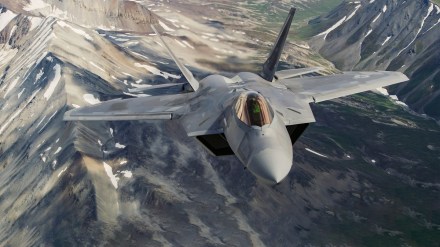Modern warfare is largely shifting towards air dominance. There are multiple projects underway in India’s aerospace ecosystem, including the Advanced Medium Combat Aircraft (AMCA) and Tejas Mk-2. There is also a mega $20 billion Multi-Role Fighter Aircraft (MRFA) programme which is initiated by the Indian Air Force (IAF).
The global’s quest for the next generation fighter jet is not only about security but it talks about the scale of the economy which is estimated at billions of dollars. For example, a joint fighter jet programme which is announced lately projects an estimated $32.1 billion to the economy. While the US takes the lead based on its superior aerospace ecosystems, several other countries have launched their next-generation combat jets. With Japan, Korea and India in the fray, the warplanes are embracing new capabilities, breaking the existing boundaries. Take a look at some of these programmes.
Global Combat Air Program (GCAP)
The GCAP is a new partnership to develop combat jets. The project involves three countries — the UK, Italy and Japan. They have forged a joint working mechanism for the development of next-generation combat jets which are defined largely as the sixth generation.
While the UK government is leading this programme, they also had a similar plan which is widely known as the Tempest. Curiously, the Tempest had a similar timeline too.
Recently, the UK government issues a statement, saying the design and development of the fighter jet are expected to begin in 2024, and it is expected to be launched by 2035.
The advancement of aerospace technologies is moving at an unprecedented scale which is mostly about addressing the capabilities such as uncrewed aircraft, advanced sensors, energy weapons and a highly complex web of data systems and networks.
The GCAP is also seen as a response to the Chinese fifth-generation fighter jets – Beijing’s J-20 and J-31 and Russian Su-57. So far, the UK, Italy and Japan have largely been depended on Lockheed Martin’s fifth generation stealth—F 35— under the strict control of the US export regime. Moreover, such control restricts the country-specific enhancement which is critical to their specific needs, especially in the context of Japan and the UK.
The Next-Generation Air Dominance (NGAD) program
One of the most ambitious projects the Pentagon has embarked upon is a sixth-generation fighter jet – known as the Next-Generation Air Dominance (NGAD) program. Shrouded in mystery, the US government is projecting the new warplane to be the successor to its F-22. With the unique combination of stealth, speed, agility, and situational awareness, combined with long-range air-to-air and air-to-ground weaponry, the F-22 is considered the best air dominance fighter in the world.
What is the most interesting aspect of the NGAD program is the radical shift from the traditional fighter jet in terms of structures, avionics, and electronics. A US Congressional Research Service document defines the technologies involved in NGAD will be all about air dominance and part of the program’s goal is to determine how to achieve that end, independent of traditional U.S. military approaches to air dominance. The reports talk of the futuristic flexible production lines, a fluid concept of continuously evolving technologies and adapting to the existing platform.
While the US government is going head ahead with the NGAD program, the concern over the price is intensifying even in comparison to F-22 Raptor which cost $191 million on average per unit. Besides the cost, the program is also focusing on the propulsion of the new class and electrical power generation for the supersonic speed.
But no doubt, the NGAD will redefine the next-generation fighter jet in terms of technology and capabilities, says a former fighter pilot of the US Air Force.
Japan’s sixth-gen F-X/F-3
Japan’s F-X or F-3 is termed as the amalgamation of the best of air-superiority-based capabilities which have matured over multiple advanced-level projects in aerospace. A lot of such projects involve close cooperation with its allies, including the US-built F-2 (F-16 derived) and F-35. The Japanese aerospace conglomerate, Mitsubishi is the lead integrator which will replace the ageing fleet of the F-X fighter jet.
In fact, as per the reports, the scale and cost of the F-X increased after Prime Minister Fumio Kishida set defence spending targets worth $316 billion over the next five years. The F-X aims to surpass the air capabilities amid threats from its neighbours especially, China.
The F-X will have a unique warfighting capability based on electromagnetic waves which are under various development. It will be a twin-engine fighter get with six internal weapons for the tactical offensive. The programme is underway and the prototype is set to be ready by 2024, with the first flight scheduled for 2028. Interestingly, according to the sources, India’s Advanced Medium Combat Aircraft program has many similarities with Japan’s F-X in terms of aerostructures and stealthy design.
“While Japan has already ordered 142 Lockheed F-35B and F-35A Lightning stealth fighter jets, the F-X is built on a concept which is a generation ahead, explained a former IAF fighter pilot.
South Korea’s KF-21 Boramae
South Korea’s KF-21 is an advanced supersonic fighter jet. The KF-21 is already undergoing test flights and it is expected to be operational by 2030. The KF-21 is a joint project between South Korea and Indonesia where Korea holds 80% of the shares.
The most versatile part of the KF-21 is the speed as experts have graded it even faster than the US-made fifth-generation fighter, the F-35. Experts call it the best-in-class for air-to-air missions.
The KF-21 program is heavily supported by US-based Lockheed Martin, assisting with flight control systems, landing gear, avionics, canopies, oxygen generators, radar, engines, ejection seats, and software systems. The other crucial technologies include AESA radar, infrared search, and track (IRST), electro-optical targeting pod (EO TGP), and radio frequency identification (RFID).
However, the lead integrator, the Korean Aerospace Industries has recently announced that all the requisite sub-systems will be fully developed in the country by 2035
